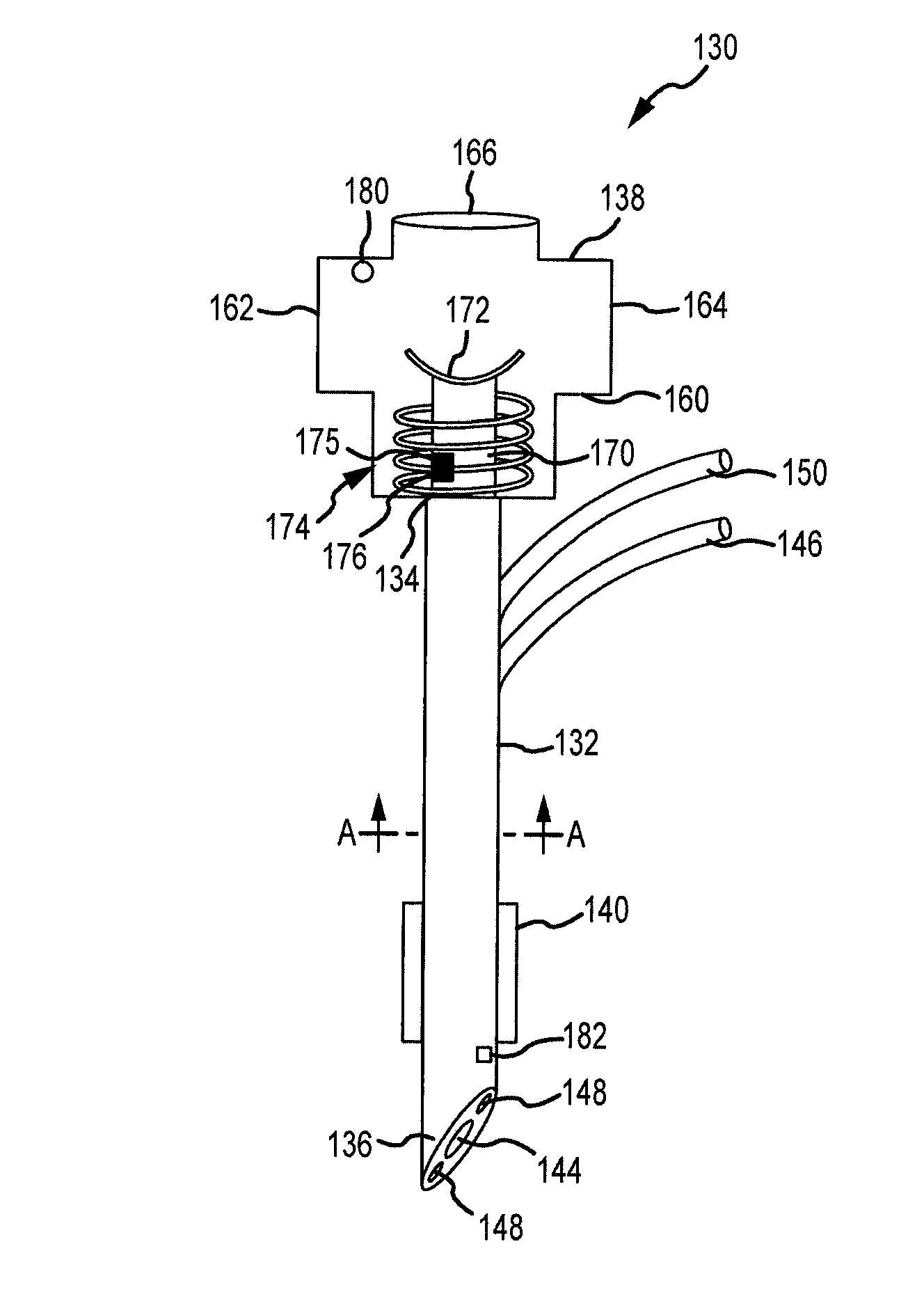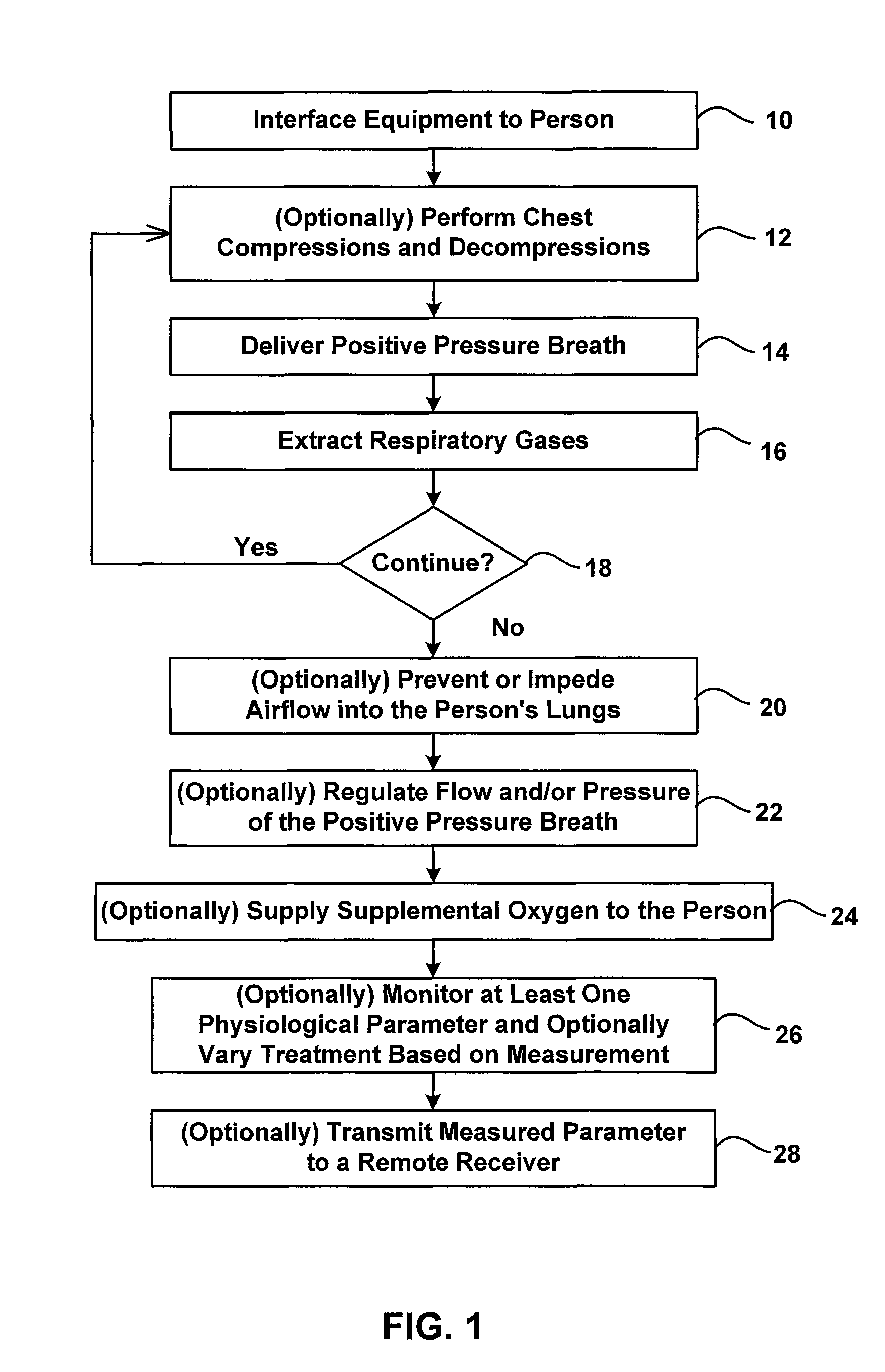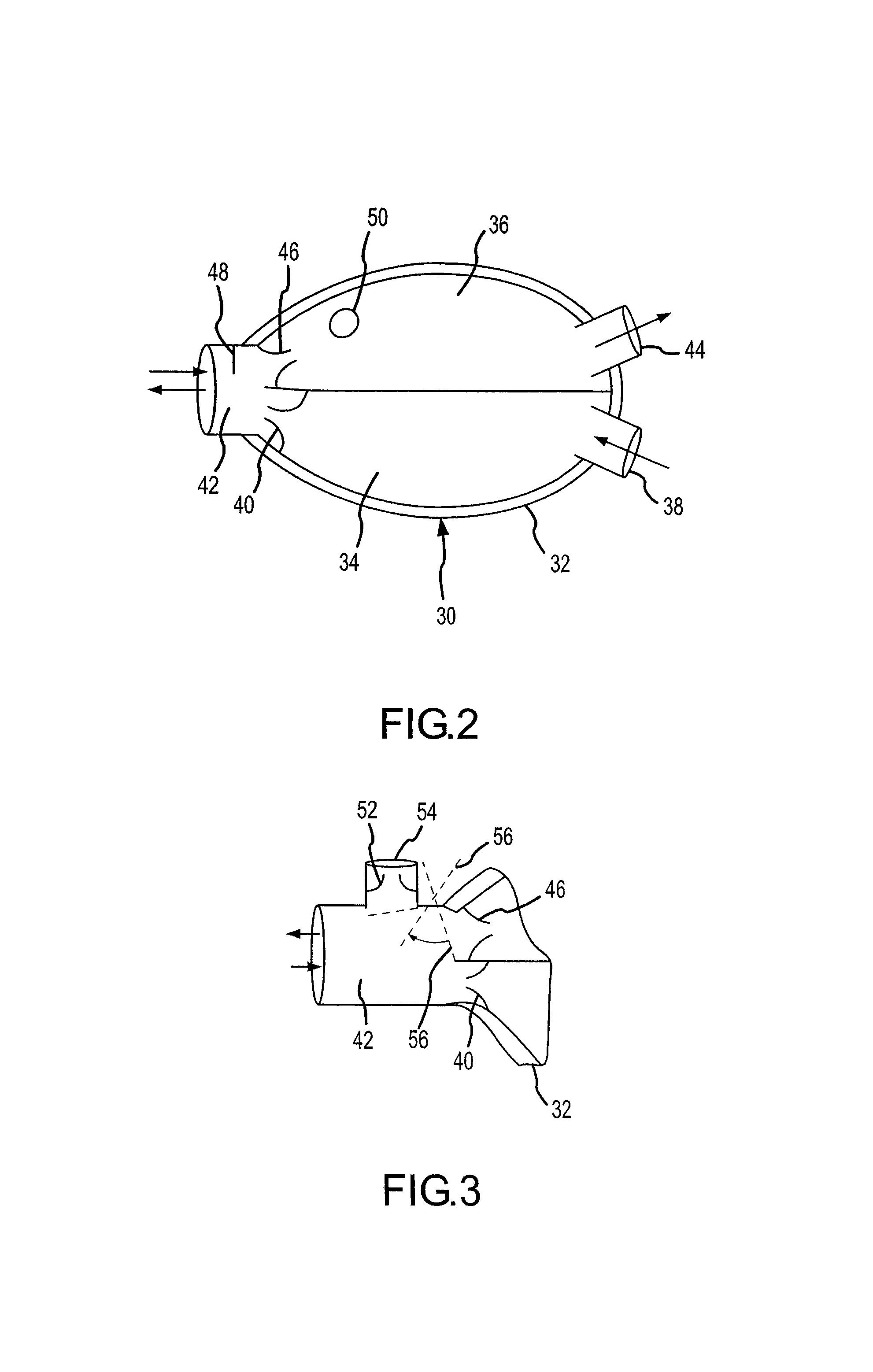CPR devices and methods utilizing a continuous supply of respiratory gases
a technology of respiratory gases and cpr, which is applied in the direction of operating means/releasing devices of valves, respirators, mechanical equipment, etc., can solve the problems of insufficient blood flow to the heart and brain, low blood pressure, morbidity and mortality, etc., to increase the magnitude and duration of negative intrathoracic pressure, and increase circulation
- Summary
- Abstract
- Description
- Claims
- Application Information
AI Technical Summary
Benefits of technology
Problems solved by technology
Method used
Image
Examples
Embodiment Construction
[0040]The invention may be useful in optimizing blood flow to the heart and brain in states of low blood pressure, head trauma, cardiac arrest and the like. For those suffering from head trauma, venous return to the chest may reduce intracranial pressures as described in U.S. Pat. No. 7,082,945, the complete disclosure of which is herein incorporated by reference. In some cases, the invention also provides techniques for providing adequate oxygenation in a patient who is receiving any one of a variety of closed-chest CPR techniques. Such techniques may include standard CPR, CPR with a compression band, CPR with a compression wrench, active compression decompression (ACD) CPR, and the like
[0041]For those with low blood pressure, the increased circulation may help to increase their blood pressure. For those in cardiac arrest, blood circulation created by the invention serves to help maintain vital organ functions until successful resuscitation.
[0042]In order to provide such circulatio...
PUM
 Login to View More
Login to View More Abstract
Description
Claims
Application Information
 Login to View More
Login to View More - R&D
- Intellectual Property
- Life Sciences
- Materials
- Tech Scout
- Unparalleled Data Quality
- Higher Quality Content
- 60% Fewer Hallucinations
Browse by: Latest US Patents, China's latest patents, Technical Efficacy Thesaurus, Application Domain, Technology Topic, Popular Technical Reports.
© 2025 PatSnap. All rights reserved.Legal|Privacy policy|Modern Slavery Act Transparency Statement|Sitemap|About US| Contact US: help@patsnap.com



